Daffodils, monocotyledonous representatives of the amaryllis family, are distinguished by one of the earliest flowering, which contrasts with only the awakening nature. Graceful flowers remind people of love and family comfort. And simple planting and care of daffodils in the open ground allows you to make them an adornment of every spring garden.
Material Content:
Daffodils: landing in the open ground

Daffodils are unpretentious bulbous plants that appear in the garden after snow melts. However, so that they delight the eye with their beauty and health, it is necessary to study all the nuances of the landing.
When to plant?
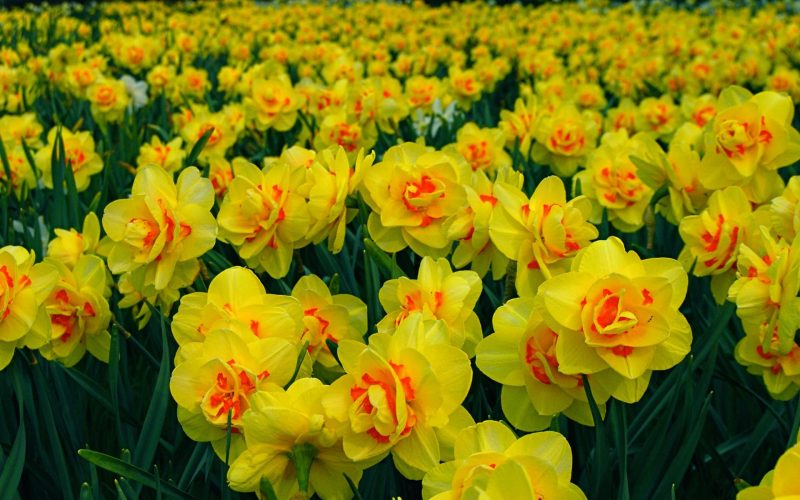
Planting dates, which are determined by the temperature of the soil, depend on the climatic zone of a particular region. The optimum time is considered to be the period during which for three weeks the soil temperature remains in the range of 8-10 ° C. As a rule, planting works occur in the autumn season, but spring sowing is also possible taking into account the preliminary two-month exposure of bulbs in the refrigerator and the agroclimatic features of the site.
In outskirts of Moscow
Planting daffodils in autumn in the suburbs is carried out from mid-August to mid-September, which is due to the achievement of the necessary temperature level of the soil in this particular period of time.
In the Urals

In this region, bulb planting, tentatively called autumn, is carried out during August. Subject to warm autumn, the period may be extended until the first half of September.
In Siberia
In the Siberian region, the planting of daffodils is carried out, as a rule, on the agro-periods of the Middle lane.
Soil preparation and site selection
When carrying out a complex of planting operations, the selection of a site taking into account the soil composition is important: the future development of daffodils depends on the correct choice. For healthy plant growth, a well-lit area with loose soil of a neutral reaction is suitable, where cereals, legumes and solanaceous crops were cultivated before the planned bulb planting.

When preparing the soil to achieve the required indicators, the following fertilizers are applied:
- nitroammophosk - 60 g per 1 m2;
- humus - 5 kg per 1 m;
- dolomite flour - 200 g per 1 m2 (with lime soil);
- wood flour - a similar amount (with acidic soil).
Read also:dolomite flour how to use in the garden
Selection of planting material
After three months after the flowering of daffodils, you can closely address the issue of acquisition of planting material.
Before making a purchase, you should carefully examine the bulbs for:
- the integrity and absence of diseased tissues;
- values - if the bulb diameter is less than 5 cm, then it will have to be grown, which will negatively affect the rate of germination.
- hardness.
How to plant?
When the temperature values of the soil have reached the required level, it will be possible to proceed with the planting of bulbs, guided by the following algorithm of action:
- Injured, diseased bulbs are inspected and rejected.
- Healthy planting material is placed in a pink manganese solution for disinfection.
- Wells with a distance of 10 cm from each other if seedling is planned, and 20 cm if natural growth will occur in the next five-year period are prepared at the selected site.
- Sand is placed at the bottom of the holes for better drainage of the soil.
- On top are bulbs that are sprinkled with soil and covered with a 4 cm layer of mulch from sawdust or straw.
At what depth should daffodils be planted?
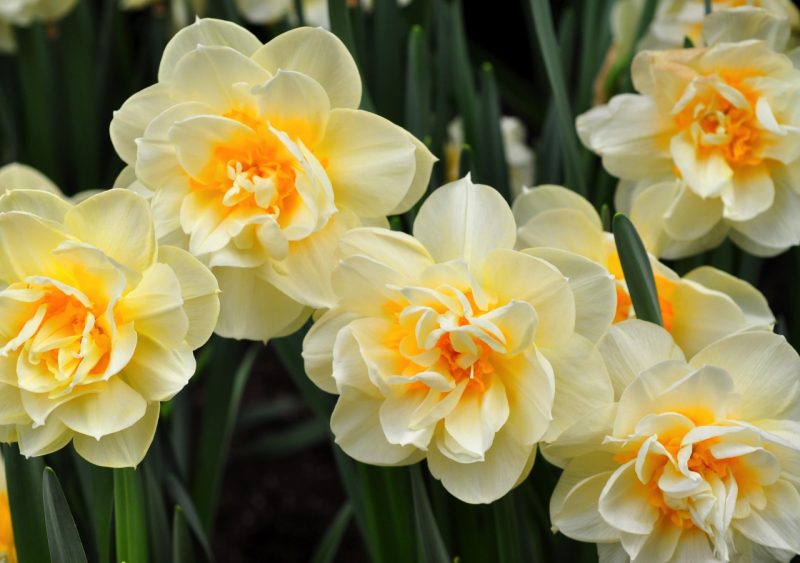
When preparing the holes, the florist is faced with the fact that the planting material of different analyzes, and therefore the depth of the planting pit, must be different. When calculating the parameter, it is necessary to take as a basis the triple diameter of the bulb: after planting, after planting, the soil layer should be equal to two bulb heights.
Outdoor propagation methods
The cultivation of daffodils is possible both from seeds and by separating daughter bulbs.
Vegetative way

During the period of active growth, from two to four are formed from one bulb, which, if desired, can be divided into the following plants:
- Bulbs are dug up and peeled of plant debris.
- Sick, injured bulbs are rejected.
- The remaining bulbs are freed from the husk, washed under running water and placed for 30 minutes in a pink solution of manganese.
- Then the step-by-step separation of daughter bulbs is carried out - the first ones to fall off are the ones that fall off on their own, then the tightly pressed bulbs swing.
- Separated onions are placed in a shaded place to dry. Then they are transferred to storage at a temperature not exceeding 17 ° C.
Advice! If the daughter bulb has come off, the fault should be sprinkled with crushed charcoal.
Seed method
Wild species without varietal traits that cannot be preserved with the generative method can be grown from seeds.
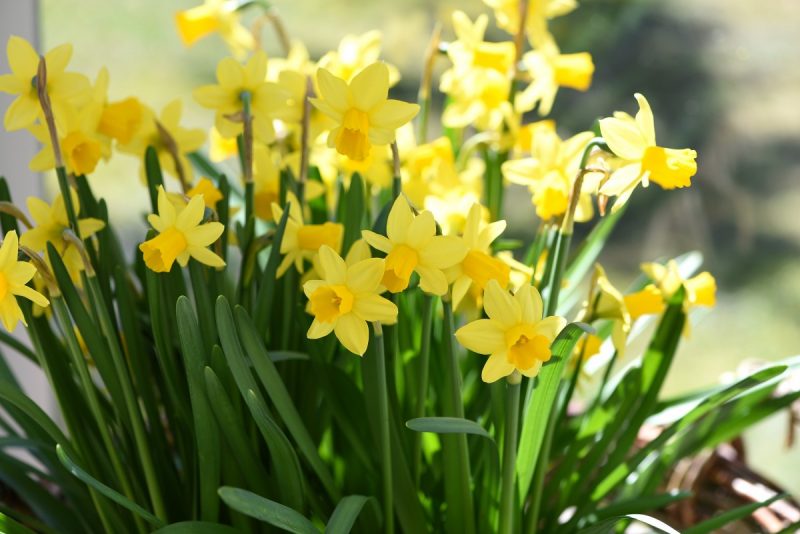
Wherein:
- Freshly harvested seeds are sown in prepared wells and are not worried for the next 2 years, which makes it possible for the bulbs to gain strength.
- After the allotted time, new plants are transplanted to a permanent place.
- The first flowering of daffodils propagated in this way is noted no earlier than after 3 years.
Important! In areas with harsh climates, seedlings can be distilled out in boxes.
Daffodil Care
To enjoy the beautiful view of healthy flowers and inhale their exquisite aroma, it is necessary to follow basic care measures.
Watering daffodils and cultivating
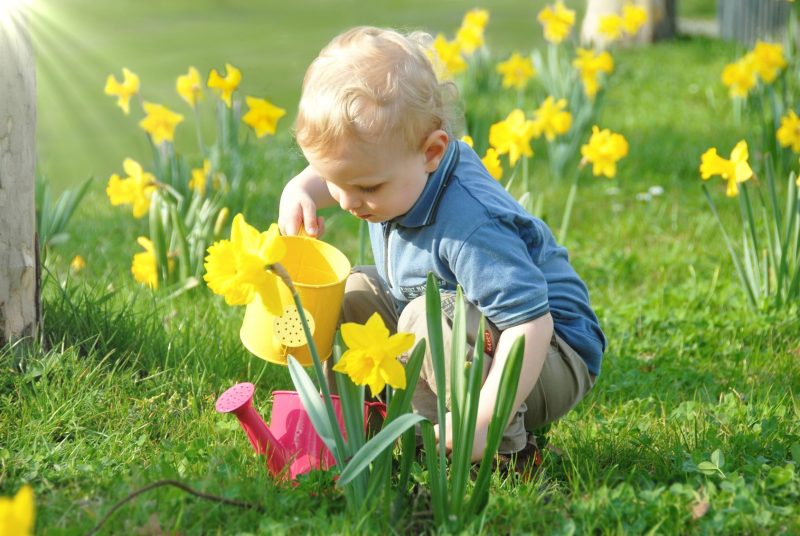
In conditions of snowy winters and dry springs, plants need regular watering until the shoots are completely dry: moisture reserves activate metabolic processes in the bulb, which allows you to accumulate the required amount of nutrients. In the absence of a layer of mulch, after each portion of moistening, it is required to loosen the aisles.
It is interesting:daffodils after flowering
Fertilizer and fertilizer
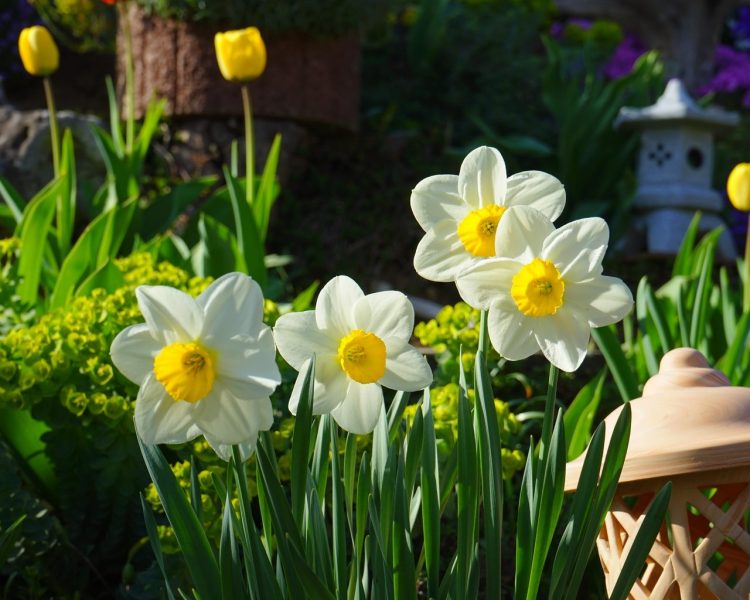
Cultivation of daffodils in the open ground provides for double top dressing:
- During the formation of the buds, the flowers are fed with a solution of complex mineral fertilizers with a consumption rate of 5 liters per 1 m2. The solution is prepared from 5 g of superphosphate, 10 g of potassium sulfate and 10 g of urea in a bucket of water.
- In the flowering phase, a mineral complex for flowering plants with a similar flow rate is introduced under the plants.
Advice! In case of a sufficient amount of natural precipitation, it is worth using granular complex fertilizers.
Diseases, pests of daffodils and methods of dealing with them

Spring flowers are prone to damage by harmful organisms. Among diseases, fusarium and rot are distinguished, the protection against which is preplant planting of bulbs. Of the pests on daffodils, there are often daffodils, tuberous and onion beetles, onion and root mites, slugs, nematodes, which are used for double treatment with insecticide and acaricidal preparations according to the manufacturer's instructions.
What to do after flowering?
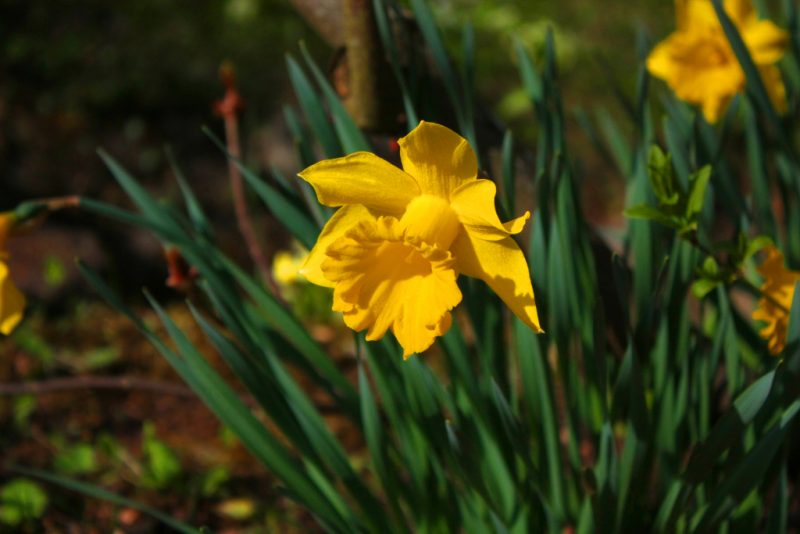
If the grower plans to leave the bulbs to winter in the ground for further growth, then the following is undertaken:
- After drying, the aerial part of the daffodil is cut off.
- The soil is loosened and cleared of weed vegetation.
- In August, in the absence of rainfall, the beds are watered several times.
- After the first frost, plantings are mulched with a thick layer of compost or sawdust.
Digging and storing bulbs
If transplantation or reproduction is planned, then the planting material is dug up and placed in storage.
Read also:daffodils: when it's time to dig
Main steps:
- After the shoots dry, the bulbs are dug up and peeled.
- If necessary, children are separated.
- Dried planting material is stored in a shaded, well-ventilated area.
How and when to transplant daffodils?
Transplantation to an onion plant is required after 5 years of growth in one place. The procedure is carried out after flowering and drying of the aboveground part in a natural way.
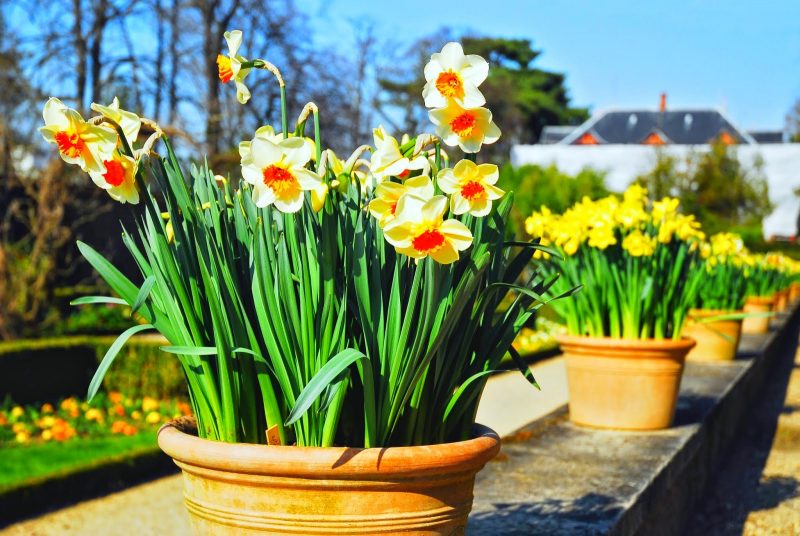
Wherein:
- Bulbs are removed from the soil, cleaned and sorted.
- From healthy large bulbs, children are separated.
- All planting material is dried, calibrated and stored for storage in a dark room.
- Two months later, landing is carried out.
So, following simple rules will allow you to decorate the spring garden with elegant, fragrant and very early flowers, which are rightfully considered a symbol of love and beauty.












